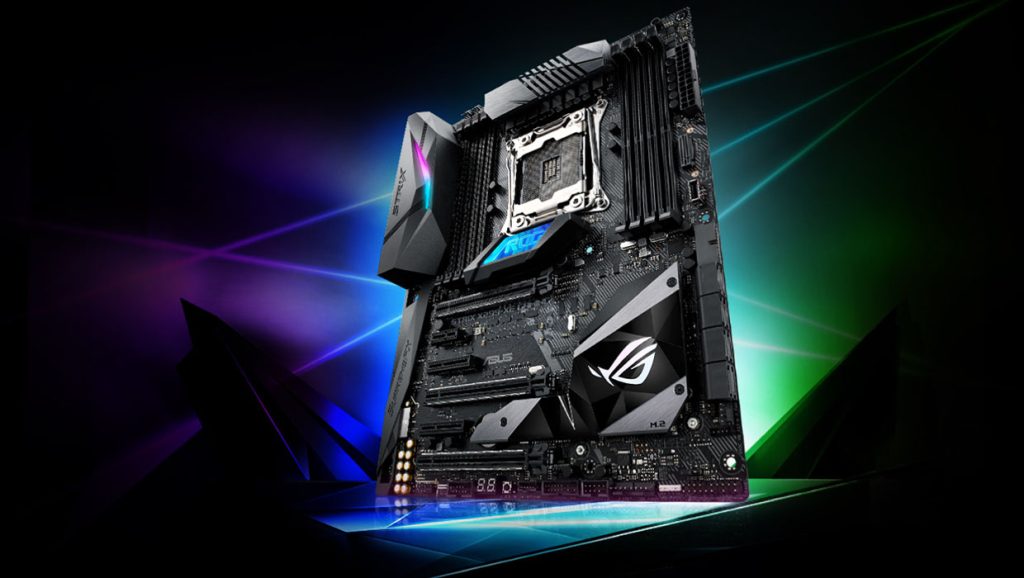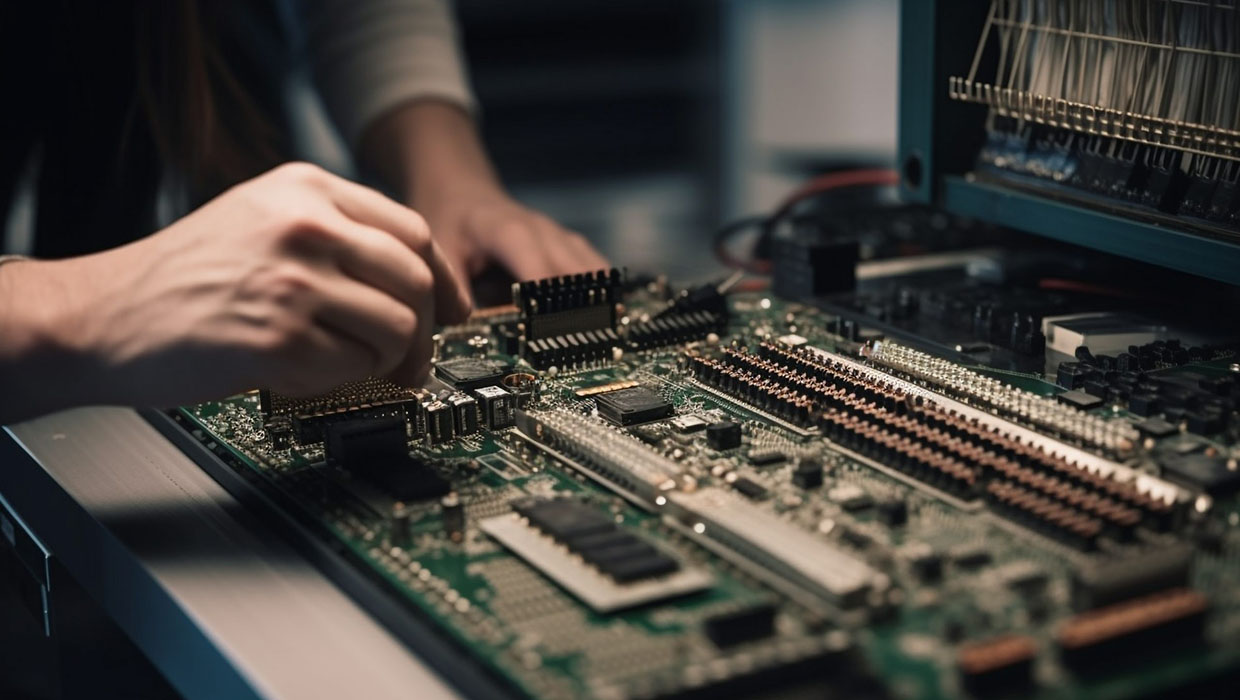Quick Troubleshooting: How to Accurately Diagnose Laptop Motherboard Issues
Today I want to talk about an issue that often leaves users scratching their heads—laptop motherboard failure. The motherboard is the central hardware of a computer, and its importance is undeniable. Unfortunately, its critical role also means that when it malfunctions, it can disrupt the entire system. Diagnosing motherboard problems can be tricky because the symptoms often overlap with those of other components. I’ll share my insights on motherboard symptoms, common causes of failure, and step-by-step troubleshooting methods to help you identify and address issues effectively.
Gazelle.com – Buy Smart. Sell Easy.
Trade in your old phone, tablet, or laptop at Gazelle.com and get instant cash offers.
Or shop certified pre-owned devices that look and work like new — all fully tested and guaranteed.
Simple. Secure. Sustainable.
Symptoms of Motherboard Issues
When your laptop’s motherboard is experiencing problems, it may exhibit some of the following symptoms:
- Failure to Power On
This is the most straightforward sign. If pressing the power button yields no response or the indicator lights up but the screen remains black, the motherboard could be at fault. - Frequent Blue Screens
While blue screens can result from software or other hardware issues, they are often linked to motherboard failures, especially when other causes have been ruled out. - Random Restarts or Freezing
If your laptop frequently freezes, restarts, or shuts down unexpectedly, it could indicate a problem with the power delivery system or overheating on the motherboard. - Unresponsive External Ports
When USB, HDMI, or other external ports stop working, it might point to circuit issues on the motherboard. - Inability to Detect Hard Drive or RAM
If your laptop fails to recognize the hard drive or memory, and these components are confirmed to be working, the motherboard’s connectors or control chips may be damaged. - Burnt Odors or Unusual Sounds
Sometimes, motherboard damage can cause electrical circuits to burn, producing a distinct smell or strange “sizzling” noises. In such cases, turn off your laptop immediately to prevent further damage.
Common Causes of Motherboard Failures
Understanding the root causes of motherboard issues can help you avoid or mitigate them in the future. Here are some common culprits:
1. Power Surges
Power surges are a leading cause of motherboard damage. Events like voltage spikes during thunderstorms or when plugging in or unplugging the charger can damage the motherboard and other components. Using surge-protected power strips is a simple way to safeguard your laptop, especially during storms.
2. Overheating
Overheating is another frequent issue. Components on the motherboard, such as chips and capacitors, are sensitive to heat. A malfunctioning cooling system, dust buildup, or poor ventilation can cause excessive heat, leading to permanent damage over time.
3. Physical Damage
Dropping the laptop, suffering an impact, or spilling liquid onto it can physically damage the motherboard. Liquid spills are particularly dangerous, as they can short-circuit the internal components.
4. Aging Components
Even with excellent maintenance, motherboards have a limited lifespan. Over time, capacitors may leak, and chips may degrade, leading to hardware failure.
5. Improper Usage
Bad habits such as frequent plugging and unplugging of external devices, improper shutdowns, or unprofessional attempts at disassembly can inadvertently damage the motherboard.
How to Troubleshoot Motherboard Issues
Once you’ve identified symptoms and potential causes, the next step is to troubleshoot. Here are some practical methods to pinpoint motherboard issues:
1. Check the Power and Basic Startup Status
If your laptop doesn’t power on, start by verifying the power source. Test with a different adapter or charging cable. If it’s a battery issue, try removing the battery and powering the laptop directly through the charger.
2. Run Diagnostic Tools
Some laptops, like those from Dell and HP, come with built-in diagnostic tools that you can access via a hotkey during startup. These tools can provide valuable insights into hardware problems, including motherboard issues.

3. Examine Event Logs
Windows’ Event Viewer logs system and hardware errors. Reviewing these logs may reveal clues pointing to motherboard-related issues.
4. Inspect for Physical Damage
If you suspect physical damage, inspect the laptop for dents, cracks, or signs of liquid spills. If you’re comfortable with basic repairs, you can also check inside for visible damage, but non-experts should avoid tampering with internal components.
5. Clean Dust Buildup
Dust is a major contributor to overheating. If you suspect overheating is causing your motherboard problems, carefully open the laptop and clean out dust with compressed air or a soft brush.
6. Reinstall RAM or Check Connections
Loose RAM modules or poor connections between the motherboard and other components can cause problems. Try reseating the RAM, hard drive, and any other removable components to ensure secure connections.
7. Use Professional Testing Tools
If the above steps don’t resolve the issue, professional tools like multimeters can test the electrical circuits, capacitors, and resistors on the motherboard. However, this requires expertise, so it’s best left to professionals.
Repair or Replace?
If you’ve confirmed the motherboard is at fault, the next decision is whether to repair or replace it. This depends on several factors:
- Type of Failure
Minor issues like a damaged capacitor or resistor can often be repaired. However, if the motherboard is severely burned or damaged, replacement might be the only viable option. - Cost
Replacing a motherboard can be expensive, especially for high-end laptops. In contrast, repairing specific components is usually more affordable, though this depends on the complexity of the issue. - Age of the Laptop
If your laptop is over five years old, replacing the motherboard might not be cost-effective. In such cases, consider upgrading to a new device.
Recommended Products

To conclude, here are two product recommendations that can help you avoid or manage motherboard issues:
- ASUS ROG Strix X-Series Motherboards
Known for reliability and durability, ASUS motherboards are ideal for gamers and users demanding high performance. With robust thermal design and surge protection, they’re well-equipped to handle electrical fluctuations. - SanDisk Portable SSDs
Why recommend an SSD? Because data loss is a potential consequence of motherboard failure. A reliable external SSD like SanDisk’s offers fast transfer speeds and durability, making it a great option for backing up important data.
I hope to give you a comprehensive understanding of laptop motherboard issues. If you encounter similar problems, try the troubleshooting methods above. And if nothing works, don’t hesitate to seek professional help.

-850x550.jpg)
